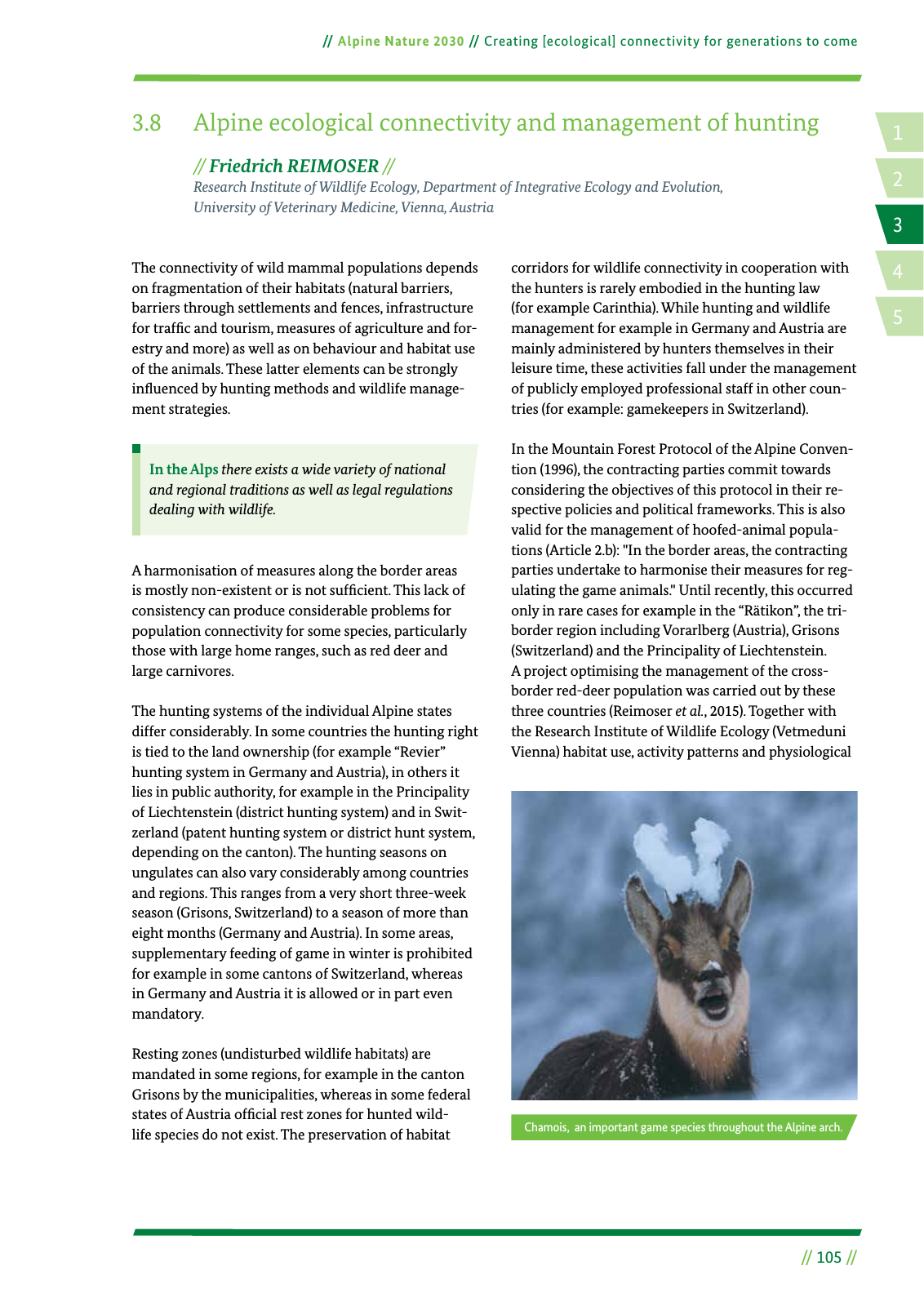14 2 5 3 Alpine Nature 2030 Creating ecological connectivity for generations to come 105 3 8 Alpine ecological connectivity and management of hunting Friedrich REIMOSER Research Institute of Wildlife Ecology Department of Integrative Ecology and Evolution University of Veterinary Medicine Vienna Austria The connectivity of wild mammal populations depends on fragmentation of their habitats natural barriers barriers through settlements and fences infrastructure for traf c and tourism measures of agriculture and for estry and more as well as on behaviour and habitat use of the animals These latter elements can be strongly in uenced by hunting methods and wildlife manage ment strategies In the Alps there exists a wide variety of national and regional traditions as well as legal regulations dealing with wildlife A harmonisation of measures along the border areas is mostly non existent or is not suf cient This lack of consistency can produce considerable problems for population connectivity for some species particularly those with large home ranges such as red deer and large carnivores The hunting systems of the individual Alpine states differ considerably In some countries the hunting right is tied to the land ownership for example Revier hunting system in Germany and Austria in others it lies in public authority for example in the Principality of Liechtenstein district hunting system and in Swit zerland patent hunting system or district hunt system depending on the canton The hunting seasons on ungulates can also vary considerably among countries and regions This ranges from a very short three week season Grisons Switzerland to a season of more than eight months Germany and Austria In some areas supplementary feeding of game in winter is prohibited for example in some cantons of Switzerland whereas in Germany and Austria it is allowed or in part even mandatory Resting zones undisturbed wildlife habitats are mandated in some regions for example in the canton Grisons by the municipalities whereas in some federal states of Austria of cial rest zones for hunted wild life species do not exist The preservation of habitat corridors for wildlife connectivity in cooperation with the hunters is rarely embodied in the hunting law for example Carinthia While hunting and wildlife management for example in Germany and Austria are mainly administered by hunters themselves in their leisure time these activities fall under the management of publicly employed professional staff in other coun tries for example gamekeepers in Switzerland In the Mountain Forest Protocol of the Alpine Conven tion 1996 the contracting parties commit towards considering the objectives of this protocol in their re spective policies and political frameworks This is also valid for the management of hoofed animal popula tions Article 2 b In the border areas the contracting parties undertake to harmonise their measures for reg ulating the game animals Until recently this occurred only in rare cases for example in the Rätikon the tri border region including Vorarlberg Austria Grisons Switzerland and the Principality of Liechtenstein A project optimising the management of the cross border red deer population was carried out by these three countries Reimoser et al 2015 Together with the Research Institute of Wildlife Ecology Vetmeduni Vienna habitat use activity patterns and physiological Chamois an important game species throughout the Alpine arch

Hinweis: Dies ist eine maschinenlesbare No-Flash Ansicht.
Klicken Sie hier um zur Online-Version zu gelangen.
Klicken Sie hier um zur Online-Version zu gelangen.